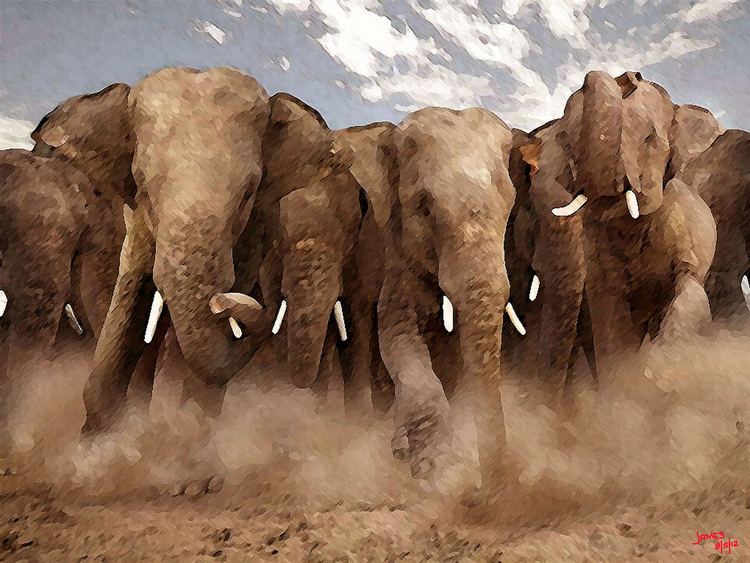 | ||
Dimitri vegas like mike vs dvbbs borgeous stampede official music video
A stampede is uncontrolled concerted running as an act of mass impulse among herd animals or a crowd of people in which the group collectively begins running, often in an attempt to escape a perceived threat.
Contents
- Dimitri vegas like mike vs dvbbs borgeous stampede official music video
- Dimitri vegas like mike vs dvbbs borgeous stampede original mix
- Cattle stampedes
- Human stampedes and crushes
- Stampedes
- Crushes
- Prevention
- Causes of death
- Examples of stampedes and crushes
- References

Non-human species associated with stampede behavior include cattle, elephants, blue wildebeests, walruses, wild horses, and rhinoceroses.
Dimitri vegas like mike vs dvbbs borgeous stampede original mix
Cattle stampedes
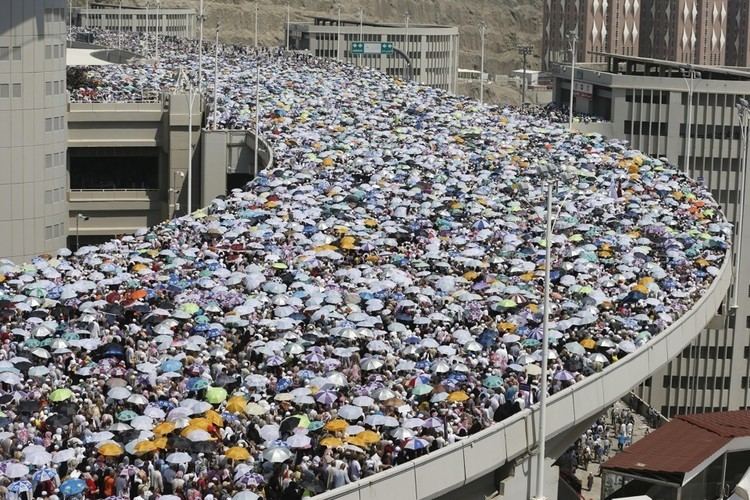
Anything unusual may start a stampede among cattle. Especially at night, things such as lighting a match, someone jumping off a horse, a horse shaking itself, a lightning strike, a tumbleweed blown into the herd, or "a horse running through a herd kicking at a saddle which has turned under its belly" have been known to cause stampedes.
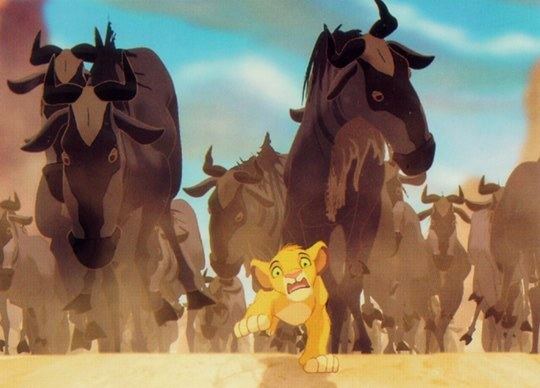
A large stampede typically eliminates everything in its path. With livestock, cowboys attempt to turn the moving herd into itself, so that it runs in circles rather than running off a cliff or into a river and avoids damaging human life or property. Tactics used to make the herd turn into itself include firing a pistol, which creates noise to make the leaders of the stampede turn.

Animals that stampede, especially cattle, are less likely to do so after having eaten and spread out in smaller groups to digest. To further reduce the risk of stampedes, cowboys sometimes sing or whistle to calm the herds disquieted by nightfall. Those on watch at night avoid doing things which could startle the herd and even distance themselves before dismounting a horse or lighting a match.
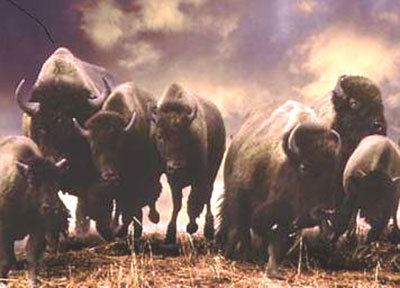
Sometimes people purposefully induce cattle to stampede as a component of warfare or hunting, such as some Native Americans, who were known to cause American bison to kill themselves at a buffalo jump.
Human stampedes and crushes
Crushes often occur during religious pilgrimages and large entertainment events, as they tend to involve dense crowds, with people closely surrounded on all sides. Human stampedes and crushes also occur in episodes of panic (e.g. in response to a fire or explosion) as people try to get away.
Stampedes
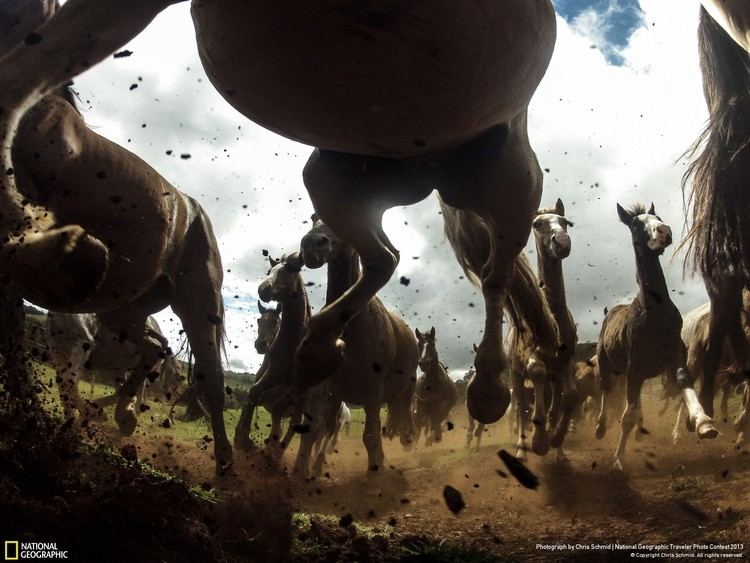
According to experts, true "stampedes" (and "panics") rarely occur except when many people are fleeing in fear, such as from a fire, and trampling by people in such "stampede" conditions rarely causes fatal injuries.
Crushes
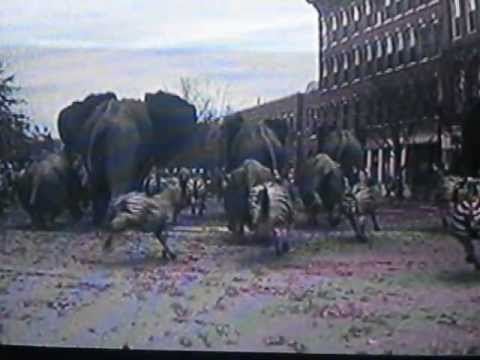
Crushes are very often referred to as stampedes but, unlike true stampedes, they can cause many deaths. Crowd density is more important than size. A density of four people per square meter begins to be dangerous, even if the crowd is not very large.
Academic experts who study crowd movements and crushing disasters oppose the use of the term "stampede". "The rhetoric of 'stampede' is often used to imply that the crowd is animalistic or mindless", Most reported "stampedes" are better understood as "progressive crowd collapses": beginning at densities of about six or seven persons per square meter, individuals are pressed so closely against each other they are unable to move as individuals, and shockwaves can travel through a crowd which, at such densities, behaves somewhat like a fluid. If a single person falls, or other people reach down to help, waves of bodies can be involuntarily precipitated forward into the open space. One such shockwave can create other openings in the crowd nearby, precipitating further crushing. Unable to draw breath, individuals in a crowd can also be crushed while standing. Journalistic misuse of the term "stampede", says Edwin Galea of the University of Greenwich, is the result of "pure ignorance and laziness … it gives the impression that it was a mindless crowd only caring about themselves, and they were prepared to crush people.” In reality, individuals are directly crushed by others nearby who have no choice, and those who can choose are too distant from the epicenter to be aware of what is happening.
Among causes of fatal crushes, sometimes described as "crazes", is when a large crowd is trying to get toward something; typically occurring when members at the back of a large crowd continue pushing forward not knowing that those at the front are being crushed, or because of something that forces them to move.
A common aftermath of a crush with serious consequences is that those responsible for the event where the crush took place, authorities such as police and government bodies, and news media blame the crowd and the victims for being out of control and causing the crush, sometimes to the extent of a full cover-up. Later analysis, sometimes after those actually responsible have retired, may show that the disaster was largely caused (in the moral and legal rather than physical sense) by actions of those planning or in authority of the event, as in the Hillsborough disaster which killed 96 football spectators; actions by the crowd were blamed until investigations two decades later found manifold errors by those responsible for organising and controlling the football event, with members of the crowd being hapless victims.
Prevention
It is believed that most major crowd disasters can be prevented by simple crowd management strategies. Human stampedes can be prevented by organization and traffic control, such as barriers. On the other hand, barriers in some cases may funnel the crowd towards an already-packed area, such as in the Hillsborough disaster. Hence barriers can be a solution in preventing or a key factor in causing a crush. One problem is lack of feedback from people being crushed to the crowd pressing behind – feedback can instead be provided by police, organizers, or other observers, particularly raised observers, such as on platforms or horseback, who can survey the crowd and use loudspeakers to communicate and direct a crowd.
There is risk of a crush when crowd density exceeds about four people per square meter. For a person in a crowd a signal of danger, and a warning to get out of the crowd if possible, is the sensation of being touched on all four sides. A later, more serious, warning is when one feels shock waves travelling through the crowd, due to people at the back pushing forward against people at the front with nowhere to go. Keith Still of the Fire Safety Engineering Group, University of Greenwich, said "Be aware of your surroundings. Look ahead. Listen to the crowd noise. If you start finding yourself in a crowd surge, wait for the surge to come, go with it, and move sideways. Keep moving with it and sideways, with it and sideways."
After the 1883 crush known as the Victoria Hall disaster which killed 183 children, a law was passed in England which required all public entertainment venues to be equipped with doors that open outwards, for example using crash bar latches that open when pushed. Crash bars are required by various building codes.
Causes of death
Deaths from human crushes and stampedes are found to be caused primarily by compressive asphyxiation; trampling is a lesser killer. This is due to crowd crush or crowd collapse. In a crowd crush people are subjected to compressive forces by being pushed from all sides (or against a barrier such as a wall) with nowhere to move into. In a progressive crowd collapse one person falls, creating a space in the crowd into which others fall, creating an even larger hole. Those who have fallen are squashed by the weight of many people on top of them (vertical stacking). Compression in either case is often fatal. A crush is typical of a crowd pushed into a confined area; a progressive crowd collapse may occur in a large crowd moving steadily forward along a confined route.
